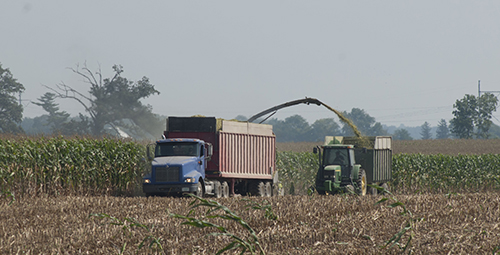
Total land for farming in 2014 was at 913 million acres, down 1.03 million acres from the year before, according to recently released numbers from USDA. The number of farms in the United States was estimated at 2.08 million, down 18,000. The only number to go in the opposite direction was average farm size, which moved up 3 acres to reach 438 acres in 2014.
Five years ago there were 2.17 million farms on 917.5 million acres, averaging 423 acres per farm.
Texas has the most farms of all, 245,500. The Lone Star State also tops the list for most acres in farming, at 130 million. Average farm size is 530 acres. The largest farms were found in Wyoming, where the average farm size was 2,598 acres, followed by Montana at 2,147 acres.
About half of the nation's farms have sales of less than $10,000 per year. These farms run about 10 percent of the nation's farmland.
Fortunately, farm productivity has stepped up to fill the hole created by lost farmland. Corn yields, for example, averaged right around 26 bushels per acre from 1866 (when USDA data collection began) until 1936. For the next 20 years, yield grew about 0.8 bushels per year. Since the mid-1950s, corn yields have grown closer to 2 bushels per year. In 2014, corn yield reached a record high 171 bushels per acre.
Factors such as biotechnology, enriched seed genetics, precision equipment, improved herbicides and fertilizers, and so much more have bolstered the yield per acre for corn and many other crops, allowing our farmers to do more with less.

The author is an associate editor and covers animal health, dairy housing and equipment, and nutrient management. She grew up on a dairy farm near Plymouth, Wis., and previously served as a University of Wisconsin agricultural extension agent. She received a master's degree from North Carolina State University and a bachelor's from University of Wisconsin-Madison.








